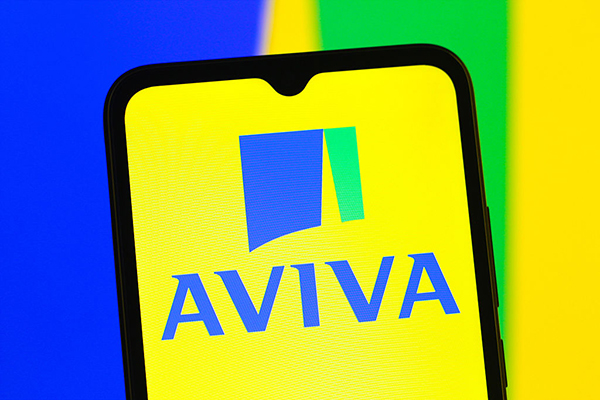Aviva's transformation continues during strong Q1
A watchdog probe into the acquisition of Direct Line is unhelpful, but these results demonstrate growth virtually across the board. ii's head of markets runs through these quarterly numbers.
15th May 2025 08:41
by Richard Hunter from interactive investor

Aviva (LSE:AV.) has reported a strong start to the year as it continues its transformational strategy towards a more capital-light business driven in part by selective bolt-on acquisitions.
Its purchases last year of AIG Life UK, which boosted its protection presence, and Probitas, which provided exposure to the Lloyd’s of London market and an estimated addressable market of £200 billion of distribution opportunities, were important and timely moves. This was then trumped by the announcement of the Direct Line acquisition in December which was well received, and with good reason.
- Invest with ii: What is a Managed ISA? | Open a Managed ISA | Transfer an ISA
Perhaps most importantly, it will further cement Aviva’s leading positions particularly in the home and car insurance markets. While the latter has seen a substantial increase in premiums to the exasperation of many consumers, the space has been affected by both higher average new car prices (equating to higher insured valuations) as well as the costly nature of repairing increasingly complex and technologically advanced vehicles.
The announcement of the Competition and Markets Authority (CMA) investigation into whether the deal represents a “substantial lessening of competition” raised some eyebrows yesterday. Given the size of the Direct Line acquisition the interest is predictable, but the time which has elapsed had led some to believe that an inquiry would not be forthcoming.
Nonetheless, the muted share price reaction to the news yesterday suggests a sanguine response from investors, while for its own part Aviva has stated that the deal remains “firmly on track”.
- Aviva shares receive further backing from City experts
- Lloyds Bank and Aviva part of £9bn FTSE 100 dividend windfall
- The Income Investor: better dividend prospects for FTSE 100 stock
Meanwhile, the group as it currently stands has seen growth virtually across the board in the first three months of 2025. Its General Insurance Premiums rose by 9% to £2.9 billion, Retirement sales by 4% to £1.8 billion and Protection % Health sales by 19% to £126 million.
Its solvency coverage ratio stands at an extremely healthy 201% and while the costly cash requirements of the Direct Line deal will prevent any share buybacks this year, a dividend yield of 6.2% is more than adequate compensation for shareholders in the interim.
An upbeat outlook on current and future trading, where Aviva remains confident in achieving previously guided numbers, was exemplified by net inflows to the end of April of £4 billion in Wealth, representing some 6% of overall Assets under Management, due largely to the arrival of another large Workplace scheme. Elsewhere, growth is likely to be maintained in the increasingly popular lines of private health and life insurance, while the group’s diversity continues to provide exposure to most insurance outcomes.
In any event, the group is looking to strengthen its suite of products while also edging towards a more capital-light framework, where it estimated that more than 70% of profit will fall under this description on completion of the Direct Line deal, let alone the significant expected synergies.
- Sign up to our free newsletter for investment ideas, latest news and award-winning analysis
- Tech bull market in full swing amid AI boom and huge Saudi deals
- M&S gets City backing for cyber attack recovery
In the meantime, its leading position in growing markets, diversity by product and geography and financial strength have all been recognised in its share price appreciation of late. Indeed, there may be scope for a further rerating should the group complete the switch from bring regarded as a general insurer rather than a pure life insurer, which tends to carry higher price valuations.
Heightened competition and any integration risks associated with the recent and proposed acquisitions have been recognised but largely swept aside by investors. The more obvious attraction of a group, which continues to play to its strengths, has led to a share price which has risen by 17% over the last year, as compared to a gain of 1.6% for the wider FTSE100 and by 39% over the last two years. Nor has appetite for the group and its prospects diminished, with the market consensus of the shares as a strong buy continuing to underline its leading credentials in the sector.
These articles are provided for information purposes only. Occasionally, an opinion about whether to buy or sell a specific investment may be provided by third parties. The content is not intended to be a personal recommendation to buy or sell any financial instrument or product, or to adopt any investment strategy as it is not provided based on an assessment of your investing knowledge and experience, your financial situation or your investment objectives. The value of your investments, and the income derived from them, may go down as well as up. You may not get back all the money that you invest. The investments referred to in this article may not be suitable for all investors, and if in doubt, an investor should seek advice from a qualified investment adviser.
Full performance can be found on the company or index summary page on the interactive investor website. Simply click on the company's or index name highlighted in the article.